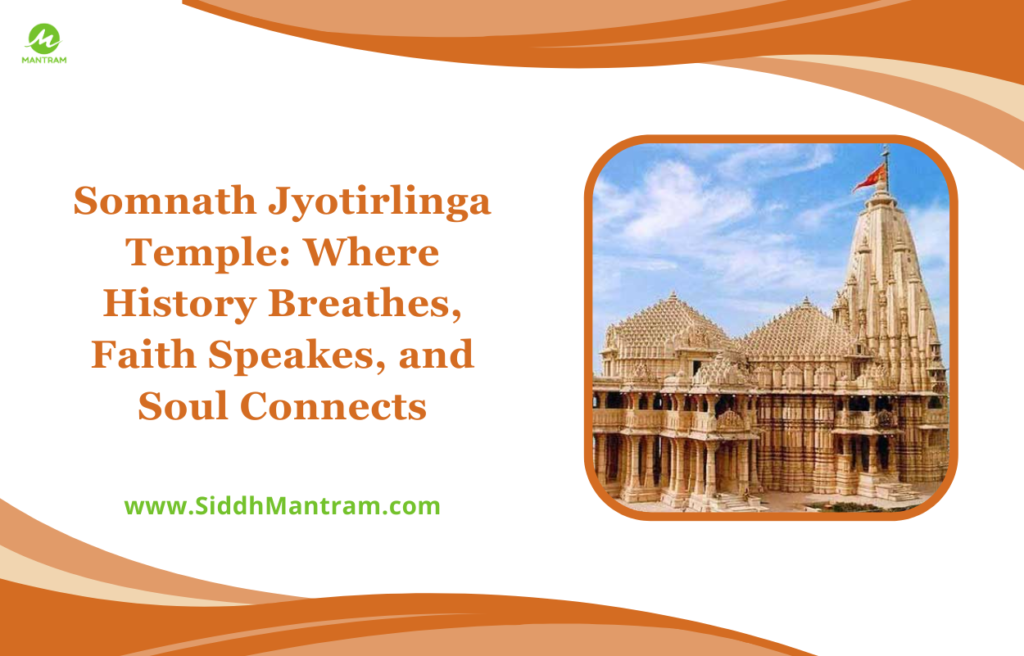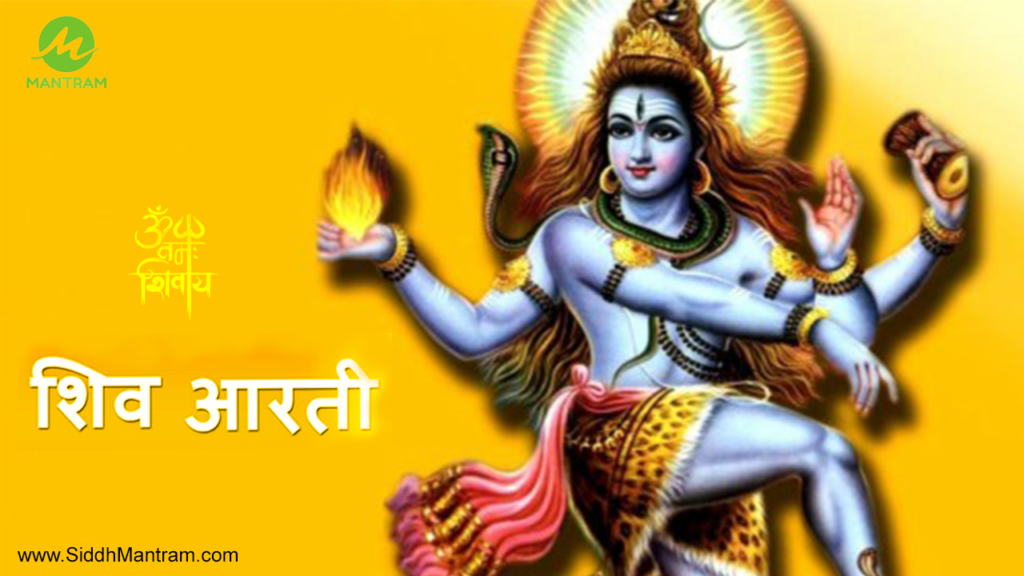Somnath Jyotirlinga Temple is esteemed and respected by people all over the country across India as the first Jyotirlinga shrine, representing Lord Shiva’s radiant form.
It stands proudly among the twelve sacred shrines scattered across the nation, embodying profound devotion and spirituality.
Somnath which means “Lord of Soma” represents the essence of Shiva, highlighting his important role and divine presence.
Despite being destroyed multiple times by invaders in the past, the temple was rebuilt in 1956.
It was carefully reconstructed in a beautiful Chalukya style of Hindu temple architecture.
The incredible achievement started when Vallabhbhai Patel was the home minister and finished after his passing, reflecting the temple’s lasting importance.
History of Somnath Temple
The Somnath Jyotirlinga Temple was damaged numerous times by different rulers and groups in history.
Invaders like Mahmud of Ghazni in the 11th century and later rulers such as Allauddin Khilji, Aurangzeb, and the Portuguese caused its destruction. Because of these attacks, the temple had to be rebuilt multiple times.
Legend says the exact time when the temple was first built is unknown. However, it’s believed that the second temple was constructed around 649 CE by the Seuna Kings of Vallabhi, also known as the Yadavas of Devagiri.
The Mythological Story behind Somnath Jyotirlinga
Chandra, the moon god, was married to 27 daughters of Daksha Prajapati. He loved Rohini more than the others, which made Prajapati angry. He cursed Chandra to lose his brightness.
Without moonlight, the world became dark, so the gods asked Prajapati to lift the curse. Daksha suggested that Chandra pray to Lord Shiva. Shiva, also known as Somnath or Someshwar, helped Chandra.
Chandra bathed in the Saraswati river to regain his brightness. This story explains why the moon waxes and wanes and why there are tides near the seashore where Somnath Temple is located.
Also Read:- Grishneshwar Jyotirlinga Temple- History, Timings & Location
Somnath Temple: A look at its amazing design and architecture.
The Somnath Temple is like a tall seven-story structure, about 155 feet high. It is made in a style called Chalukya and has lots of fancy carvings made by expert builders from Gujarat. The temple sits in a special spot overlooking the sea, and they say you can’t see any land from there until Antarctica.
At the very top of the temple, there’s a huge pot-like thing called a Kalash that weighs around 10 tons. And on top of that, there’s a really tall flag. Nearby, interesting pictures show the old times of the temple, how it got ruined, and how people fixed it. Inside, the temple has amazing carvings and sculptures that make it look really beautiful.
The Somnath Jyotirlinga Temple Location
Located on India’s western coast near Veraval, Gujarat, the Somnath Temple is a remarkable testament to our spiritual and historical heritage.
Somnath Temple has been admired for ages as one of India’s foremost pilgrimage destinations. Its significance lies in being situated at the meeting point of three sacred rivers- Kapila, Hiran, and Saraswati- known as Triveni Sangam.
Let’s know the secret highlights the temple’s significance and how it was rebuilt with different materials over time.
According to legends, the Shiva linga hid a special gem called the Syamantak Mani.
This gem was said to have magical powers, making gold and floating the linga.
To protect it, people used bel patras as they thought these leaves could keep them safe from any harmful effects.
These stories mix myths, magic, and beliefs, adding to the spiritual and cultural tales passed down through generations.
According to ancient stories, they tell us the initial Somnath Temple was made of gold by the moon god, Soma.
Then, it’s said that Ravana, the king of Lanka, rebuilt it using silver. Later, Lord Krishna’s grandson, King Bhagirath, is believed to have reconstructed it with wood.
Find Out:- What is the Difference Between Jyotirlinga and Shivling
Somnath Temple Shivling Untouched Story
It is said that a remarkable stone the Syamantak Mani, generated a magnetic field around the Somnath Shivlinga.
Due to the magnetic force caused by linga to levitate above the ground, it is inapproachable to touch.
This magical state ensured the linga remained untouched and beyond reach, believed to be protected by the stone’s extraordinary properties, forming a vital part of the cultural and spiritual narratives surrounding the Shivlinga.
Placing Belpatra on Shivling is special to Lord Shiva and can help maintain positive energy.
Somnath Temple Timings
The Somnath Temple welcomes visitors from 6:00 AM to 10:00 PM every day. During these hours, the temple conducts prayers, known as poojas, and carries out different sacred rituals.
| Morning Aarti | 7:00 AM |
| Afternoon Aarti | 12:00 PM |
| Evening Aarti | 7:00 PM |
| Opens at | 6:00 AM |
| Closes at | 10:00 PM |
Places to visit near Somnath Temple
- Gita Temple- The Gita Temple was constructed in the 1970s. It sits at the meeting point of the Hiran, Kapila, and Saraswati rivers on a spot called Triveni Ghat. The distance from Somnath Temple to Gita Temple is approximately 1.9 kilometers.
- Bhalka Teerth- 5 kilometers away from the Prabhas-Veraval highway lies the place where a hunter named Jara accidentally hit Sri Krishna with an arrow while he was resting under a Peepal tree. Following this event, Lord Sri Krishna walked from there to the banks of River Hiran, where he commenced his final journey.
- Somnath Beach- About 550.0 meters from Somnath Temple lies a famous area known for its mesmerizing sparkling waves and long stretches of beautiful gray sands.
- Prabhas Patan Museum- Around 300.0 meters from Somnath Temple, you’ll find the Prabhas Patan Museum. Prabhas Patan, also known as Somnath Patan or historically referred to as Dev Patan, is an area located in Veraval, Gir Somnath district, nestled in the Saurashtra region of Gujarat, India.
Also Read:- Nishkalank Mahadev Temple: A Shiva temple that disappears by itself
Things to do in Somnath
- Enjoy the beautiful view and sunset at the Somnath beach located opposite Somnath Temple near the Arabian Sea’s edge. Swimming is not allowed but people can enjoy it like camel riding, and quad biking, and also enjoy delicious street foods.
- One can buy the famous items of Somnath like cradle clothes, wall hangings, animal trappings, and marriage costumes these items are embroidered and beautifully decorated with beads.
- Explore the Panch Pandav Gufa, Yudhishthir, Bheema, Arjuna, Nakul, Sahadev, and their mother who lived in a cave temple in Lalghati near Somnath during their tough times.
- Bath in Sacred Triveni Ghat is believed to wash away sins and bring one closer to God. Triveni Ghat is the place where three holy river meets.
Conclusion
Somnath Temple is a strong symbol of faith and devotion to Lord Shiva. Despite its history of being destroyed and rebuilt, it stands tall. People come here for peace and spiritual connection. Inside, the temple feels serene with chants and a deep sense of culture. It’s a special place where tradition and devotion meet for visitors.



